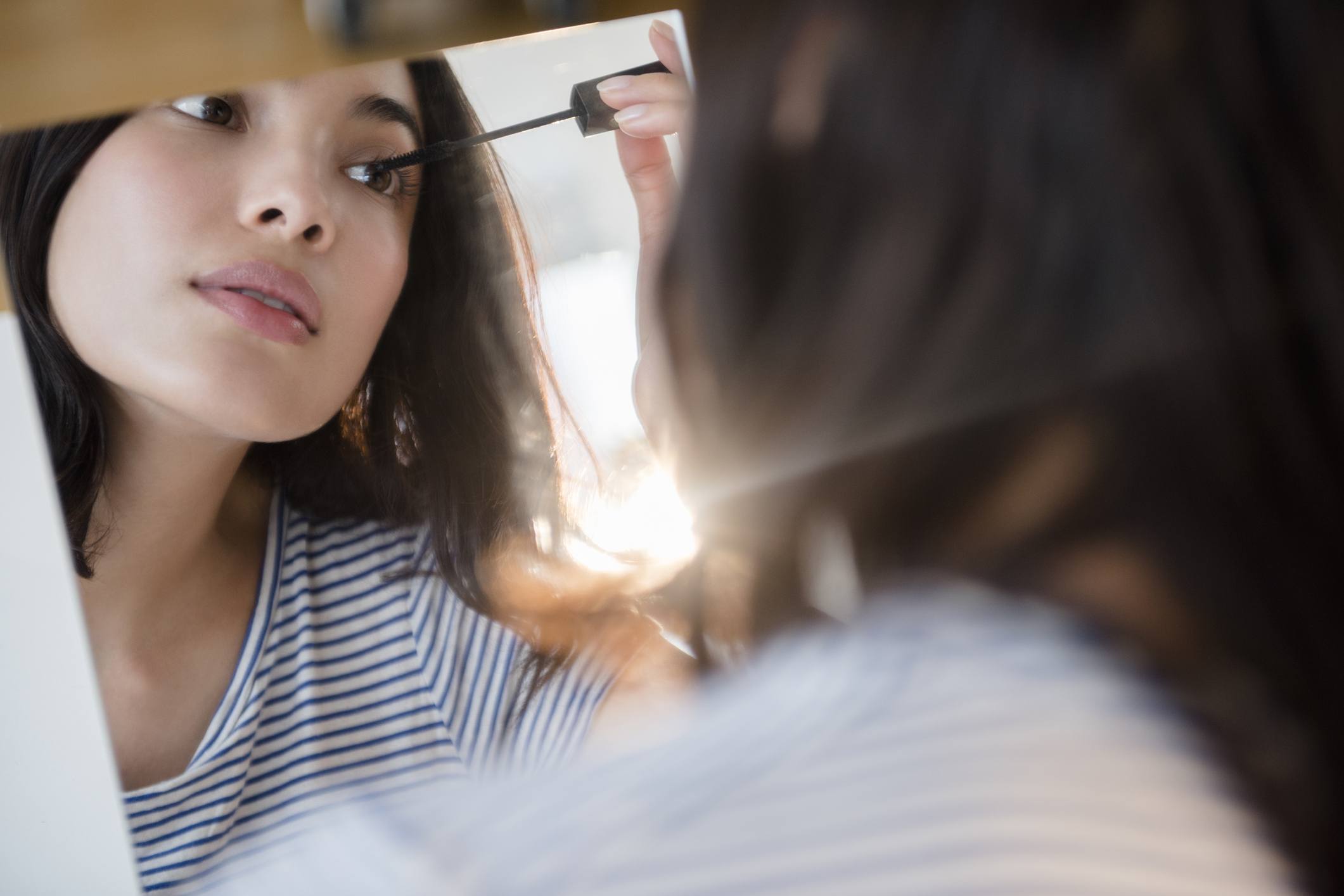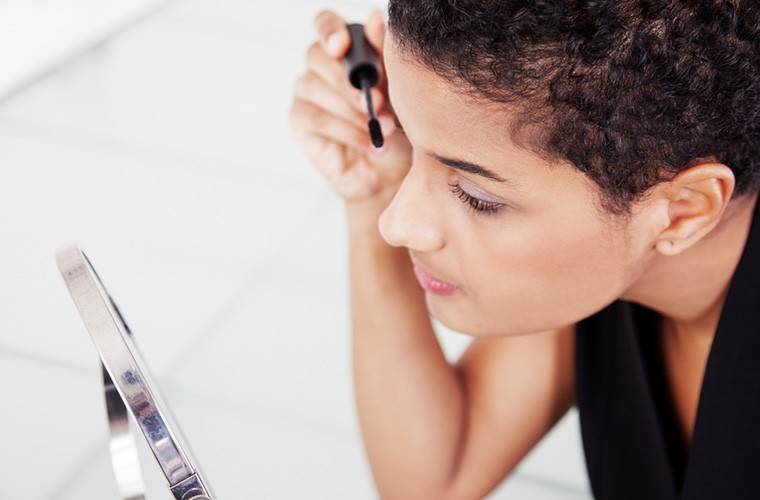Let’s Hear It for the Drugstore Mascara, Which Is Having a *Major* Moment
But the best part? My discount. Which meant half of my paycheck was dedicated to purchasing whatever my heart desired. Back then, it was mostly nail polish, hair accessories, lip gloss, and, of course, mascara. It’s the one product I never leave my house without because it has so many benefits: It’s easy-to-apply, it travels well, and it adds an instant glam factor even if you're rocking sweatpants. The best part, however? It's a drugstore diamond. So amazing, so wonderful that Kristopher Buckle told Allure that he uses Covergirl Lash Blast Volume Waterproof ($9) on the queen of pop herself, Mariah Carey. Let's here it for the best of the best drugstore mascaras.
What I learned back then at Ulta has since been confirmed in my time as a beauty editor: Mascaras that you find in the aisles of CVS and Target are so good they can rival any pricier tube at the department store or Sephora. But why is that? I wanted to hear from cosmetic chemists and celebrity makeup artists alike on exactly why, with a kit full of options, drugstore mascaras still have a special place in their hearts—and counter space. Keep scrolling to read more.

The formulation of a drugstore mascara
First things first, how exactly does your prized beauty staple work? Put simply, “the short answer is mascara works by depositing color or small fibers onto your lashes to make them appear longer, darker or more voluminous,” says R&D personal care senior chemist at Hain, Tawhanna Wood.

{{post.sponsorText}}
Fair enough, but why in a sea of inky formulas do some stand out? “There are two components to mascara that make it work. The first is the mascara wand. Secondly, the key to having a great mascara is the composition of the formulation,” Wood tells me. “Mascara can either be anhydrous, containing no water or an emulsion containing water and oil. Mascaras that are formulated with little to no water are considered waterproof.”
“There are two components to mascara that make it work. The first is the mascara wand. Secondly, the key to having a great mascara is the composition of the formulation.”
According to cosmetic chemist Stephen Alain Ko, various iterations assist us in achieving a "look," whether we're going after thickening, lengthening, or a curling effect. “The ingredients will vary from formula to formula, most will have the basis of pigment and coating materials,” he shares. Cosmetic chemist and Director at The Eco Well, Jen Novakovich explains that “having something in place to thicken up the formula to have a better consistency, and also a better dispersion of the color, is usually added to mascaras. For example, on the natural side, you’ve got many gums, on the less natural side, different gum, guar and clay derivatives, and on the synthetic side, ingredients like carbomer,” she explains.
Depending on the desired effect of the formula in question, these ingredients—pigments, thickening agents, and emulsifiers —will appear at different levels to make lashes achieve the desired effect. “In your emulsion, you want very light oily ingredients, which will give you a really nice feel for your lashes,” she adds. “In conventional mascaras, these are usually ingredients like dimethicone, a very light oily silicone-based ingredient. In contrast, many natural mascaras will opt for slightly heavier oils, such as plant oils or natural oil derivative, for example, ‘MCT’ coconut oil.”
Why the mascara brush is so important
When it comes to what is the best mascara on the market, the better question to ask, according to cosmetic chemists, is: Which brand has the best brush?
“The biggest factor in how a mascara goes on is the brush,” explains Ginger King, a New Jersey-based cosmetic chemist. “There are so many versions: tree shape brushes, spiral brushes, hollow brushes, rubber brushes, and the list goes on. The brush determines if a mascara can give ‘separation' or ‘add more volume’ by giving more deposition of the product or by lengthening or stretching out the polymer more.”
The different brushes coupled with the specific formulas, explains all of the variability that you'll see when you go to the drugstore shelf. And there's a lot of pay off (ahem) that comes with getting it right, King tells me. “Mascara is very profitable since you have to repurchase it every three months, as it either dries out or it can go bad," she says. "You do not want to get an eye infection!”
Because mascara is an item that you're buying four times a year minimum, it makes sense that many want to opt for an effective formula at a lower price point. “[Big companies] spend the most on research and development and have the most effective technology. When developing new products, all the companies in the industry use products from these companies as the benchmark," says Perry Romanowski, Vice President Element 44 Inc and cosmetic chemist. That means that shopping the drugstore for mascara is like shopping a goldmine of options.

Why are some mascaras still expensive, then?
"The skeleton to a mascara formulation is typically the same. The main ingredients are pigments, waxes, and oils. Higher-end brands tend to have higher formulation cost and therefore can use more prestige or exotic ingredients," Wood explains. "This doesn’t necessarily mean the formulation is better or that the end product will perform differently.”
Romanowski cites the reason for the huge price spike as packaging. Yes, we hate to break it to you but you are paying for those cool, IG-worthy shots on your bathroom countertop. “The price difference is not based on how well the formulas work, but rather on the brand positioning of the product. You can find lower cost mascaras that work as well as any expensive one,” he tells me.
Some of the pricier options can include conditioners, serums, and treatments in their mascaras to make your application feel more luxe—but nowadays, so do drugstore options, makeup artist Lavonne Anthony tells me. But the bottom line? “Formulation-wise, there is not a huge difference between drugstore and expensive options," emphasizes King. If you buy a mascara in which the wand is separate from the formula, let it chill in your makeup bag for a day before using it. “Mascara needs to be soaked 24 hours in the brush (except rubber ones) to get a good deposition,” she explains. “This is also why it appeared some mascara work better after using them a couple times.
How to make any mascara work for you
Ask a group of 10 women how they apply their mascara—and you might get 10 different answers. From sticking out your tongue to gazing down at the floor, makeup artists have plenty of tricks for getting lashes to do their thing.
For voluminous lashes, celeb makeup artist Marco Castro always starts by curling the lashes first. “I like to apply the first layer starting from the root and combing the lashes through all the way to the tip,” he explains. “For, the second layer I proceed on a zig zag motion, taking time to add volume, and lastly I make sure to get every single lash and corners with the tip of the wand.”
Anthony advises clients to try her signature “blink and coat” method to achieve long, inky fringe. “It’s where you put the wand close to the eye and blink onto the brush. Wiggle and roll, start at root and wiggle up to the tip of the lash. Full stroke, start at root and do full strokes from root to lash repeatedly.”
Going for a thick blade of full-on fringe? Celebrity makeup artist Camara Aunique is a fan of letting mascara layers “set” to maximum the look of thickness and length. "For the everyday woman tilt your head up and apply from the lash line and wiggle your way up to the end of the lash,” she explains. “Let it sit for a couple minutes and apply another coat. You could never have enough mascara.
Now that we're on the topic, here are 9 really great mascaras and this is why it's super important to take your mascara off before you go to bed.
Loading More Posts...